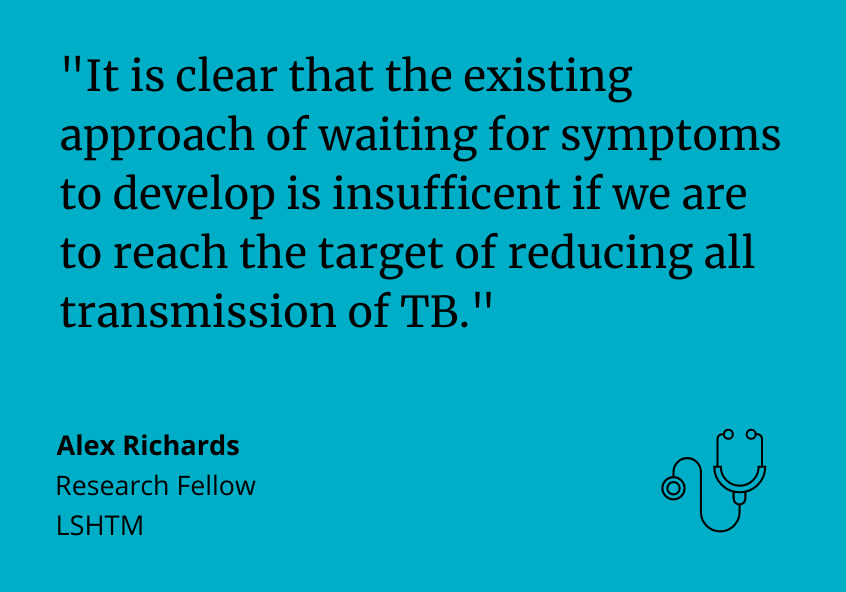Why we need new tests to detect asymptomatic TB
London School of Hygiene & Tropical Medicine https://lshtm.ac.uk/themes/custom/lshtm/images/lshtm-logo-black.png Friday 24 March 2023
Globally, tuberculosis (TB) still causes 1.6 million deaths a year, with another 10 million people developing the disease. We know that half of those with infectious TB do not report symptoms, and that the disease exists on a spectrum that can progress and regress over time if left untreated.
However, as everyone with infectious TB is provided with treatment from first detection we cannot study how disease develops before or beyond this point. In order to inform policy and make decisions on the best methods to detect and treat TB, we need to understand how the disease develops. This impasse needs addressing, which is the basis of our recent publication in Lancet Global Health.
In the first half of the 20th century, before effective drug therapies were available, many clinicians and scientists recorded their observations of the development of TB. Much of this research was published but not used, so we performed a systematic review to uncover what was available. Overall, we found over 20 studies from as early as 1923 that provided informative data on the progression of disease. No single study gave all the information on progression across the spectrum, but by combining the data to inform a model structure, we could establish crucial estimates for progression and regression.
Our findings show that 25% of people with infectious TB may never develop symptoms. Many will instead recover without treatment, but before then will transmit the disease to others, and experience further damage to their lungs, with potentially lifelong consequences. We also found evidence for a state of non-infectious disease, where the disease is causing damage, but may go undetected for years.
From these findings it is clear that the existing approach of waiting for symptoms to develop is insufficient if we are to reach the target of interrupting or preventing all transmission, and does not help people who develop long-term lung damage without ever developing symptoms. Instead, we should consider the different disease states and improve our understanding of how to test for and treat these states. Any test that targets these TB states must be minimally invasive and widely acceptable, not just among clinicians who perform the tests, but also among the people who will have to be tested multiple times over the course of their lifetime. Any proposed course of treatment will also need to be accepted by people who may feel well. Our study has answered some important questions, but many more remain.
LSHTM's short courses provide opportunities to study specialised topics across a broad range of public and global health fields. From AMR to vaccines, travel medicine to clinical trials, and modelling to malaria, refresh your skills and join one of our short courses today.